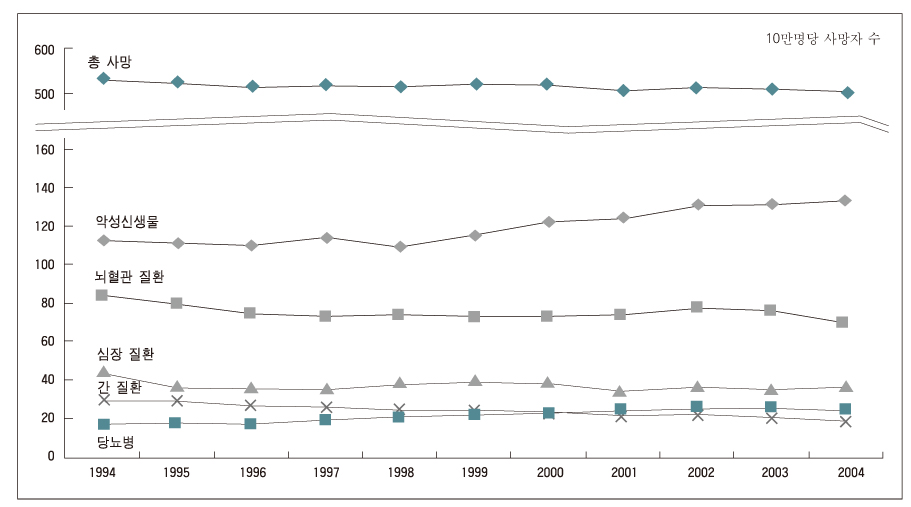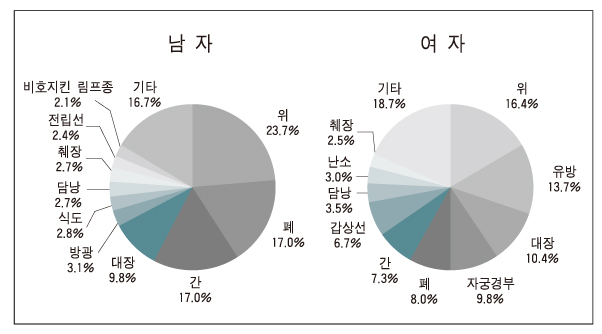J Korean Med Assoc.
2006 May;49(5):439-448. 10.5124/jkma.2006.49.5.439.
Cancer Screening in Korea I
- Affiliations
-
- 1Center for Cancer Prevention and Early Detection, National Cancer Center, Korea. hongwan@ncc.re.kr
- KMID: 2064952
- DOI: http://doi.org/10.5124/jkma.2006.49.5.439
Abstract
- The proportion of cancer related mortality is 26.3% in 2004 and it is still increasing. The most common cancers are stomach cancer, lung cancer, liver cancer, colon cancer, breast cancer, and cervix cancer in order of frequency. The proportion of above 6 most common cancers in mortality is 66.8%. The purpose of cancer screening is to reduce morbidity and mortality of cancers by early diagnosis and early treatment. The assessment of screening test includes validity and reliability. Four terms describe the validity of a screening tests: sensitivity, specificity, positive predictive values and negative predictive value. The low prevalence lower the positive predictive value. Bias in the evaluation of screening tests lies in selection bias, lead-time bias, and length bias. National cancer screening program for 5 popular cnacers except lung cancer developed since 1999. The target population of this program is lower half of low-income level.
Keyword
MeSH Terms
-
Bias (Epidemiology)
Breast Neoplasms
Colonic Neoplasms
Early Detection of Cancer*
Early Diagnosis
Health Services Needs and Demand
Korea*
Liver Neoplasms
Lung Neoplasms
Mass Screening
Mortality
Prevalence
Reproducibility of Results
Selection Bias
Sensitivity and Specificity
Stomach Neoplasms
Uterine Cervical Neoplasms
Figure
Reference
-
2. Black WC, Welch HG. Screening for disease. AJR. 997. 01. 168:3–11.
Article3. Feightner JW, Battista RN, Dingle JL. Rakel RE, editor. Periodic health examination. Textbook of Family Medicine. 1995. 5th ed. Philadelphia: Saunders;165–191.4. The periodic health examination. Canadian Task Force on the Periodic Health Examination. Can Med Assoc J. 1979. 121:1193–1254.5. U.S. Preventive Services Task Force. Guide to Clinical Preventive Services. An Assess ment of the Effectiveness of 169 interventions: Report of the U.S. Preventive Services Task Force. 1989. Baltimore: Williams & Wilkins.6. Bates SE. Clinical applications of serum tumor markers. Ann of Int Med. 1991. 115:623–638.
Article7. Grimes DA, Schulz KF. Uses and abuses of screening tests. Lancet. 2002. 359:881–884.
Article8. Marshall KG. Prevention. How much harm? How much benefit? 4. The ethics of informed consent for preventive secreening programs. Can Med Assoc J. 1996. 155:377–382.9. Gates TJ. Screening for cancer: evaluating the evidence. Am Fam Physician. 2001. 63:513–522.



